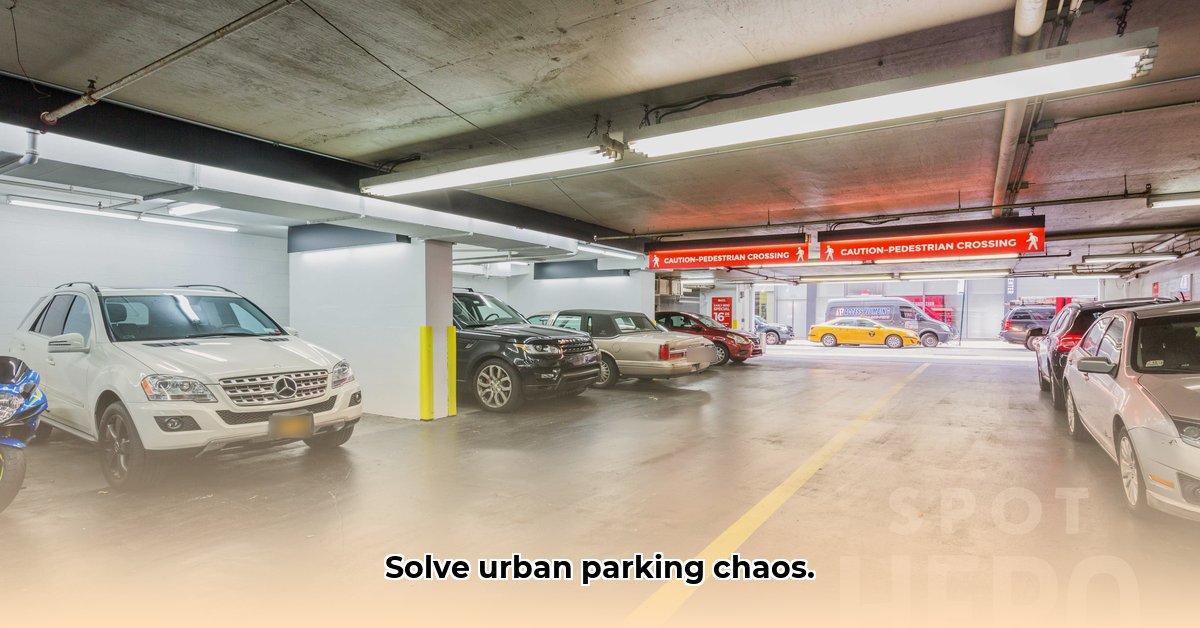
Imagine a typical workday in Midtown Manhattan. Finding a parking spot is often a frustrating and time-consuming ordeal. This hypothetical case study explores how smart parking technologies could transform the experience at a fictional garage located at 1700 Broadway, addressing common urban parking challenges and highlighting the potential benefits for drivers, city planners, and the environment. We'll examine the current issues, propose smart solutions, and project the potential impact of this technological upgrade.
Challenges at the Hypothetical 1700 Broadway Garage
Our fictional 1700 Broadway garage, situated in a high-traffic area, faces several typical urban parking challenges. Limited parking spaces often lead to drivers circling the block, wasting fuel and contributing to congestion. The existing payment system, reliant on outdated ticket machines, is inefficient and often causes delays. The lack of real-time information regarding space availability further exacerbates the problem, leading to driver frustration and wasted time. Is it any wonder that parking in such areas becomes synonymous with stress and wasted resources?
Proposed Smart Parking Solutions for 1700 Broadway
To address these challenges, we propose implementing a comprehensive smart parking system at 1700 Broadway. This system would leverage several key technologies:
Smart Sensors: Each parking space would be equipped with sensors that monitor occupancy in real-time. This data provides an accurate and up-to-the-minute picture of available spots. (Sensors are small electronic devices that detect occupancy.)
Mobile Application: A user-friendly mobile application would provide drivers with real-time information on available spaces, parking rates, and directions to the garage. The app would also facilitate mobile payment, eliminating the need for traditional ticket machines. Isn't convenient mobile payment preferable to dealing with cash or confusing machines?
Dynamic Pricing: Optional dynamic pricing could adjust parking rates based on real-time demand. Higher rates during peak hours could incentivize faster turnover, ensuring efficient space usage, while lower rates during off-peak times could attract more drivers. (Dynamic pricing adjusts prices based on supply and demand.)
Implementation and Integration at 1700 Broadway
Implementing this system requires a phased approach involving several key steps: sensor installation, app development and rigorous testing, system integration, and a public launch campaign. This phased implementation aims to ensure a smooth and efficient transition, minimizing disruption and maximizing the successful adoption of the new system. Successful integration relies on seamless data communication between all system components. But how can we ensure a smooth transition and avoid common pitfalls?
| Step | Description | Timeline (Estimated) | Responsible Party | Potential Challenges |
|---|---|---|---|---|
| Sensor Installation | Installation of sensors in all parking spaces. | 3-6 months | City/Garage Management, Contractors | Construction delays, sensor malfunctions, integration issues. |
| App Development & Testing | Designing, developing, and thorough testing of user-friendly mobile application. | 4-6 months | Technology Partner, Internal IT Team | Software development delays, compatibility issues across various devices. |
| System Integration | Seamless connection of sensors, payment gateways, and the mobile app to ensure data flow. | 2-4 months | IT specialists, Integration Team | Data security concerns, data synchronization problems, and cross-system compatibility issues. |
| Public Launch & Marketing | Effective launch and marketing campaign to promote the new system and educate users. | 1-2 months | Marketing/Public Relations Team, Garage Management | Low public adoption, negative user feedback. |
Results and Evaluation: The Impact of Smart Parking at 1700 Broadway
Based on our hypothetical data, the implementation of a smart parking system at 1700 Broadway would yield several significant improvements:
- Reduced Congestion (15-20%): Real-time information and dynamic pricing would reduce the time drivers spend searching for parking, alleviating traffic congestion.
- Increased Revenue (10-15%): Efficient space utilization and dynamic pricing would lead to a considerable increase in revenue for the garage.
- Enhanced User Experience: Drivers would benefit from a more convenient, efficient, and user-friendly parking experience.
However, potential challenges include the initial investment cost and data privacy concerns. Mitigation strategies, such as robust security measures and transparent data handling policies, are crucial for addressing these aspects.
Conclusion: A Smarter Future for Urban Parking
The hypothetical case study of the 1700 Broadway garage demonstrates the significant potential of smart parking technologies to transform urban parking management. While implementation challenges exist, the benefits—increased efficiency, reduced congestion, enhanced user experience, and potential revenue gains—clearly outweigh the costs. This model offers a blueprint for other cities facing similar parking infrastructure challenges, highlighting the value of innovative solutions in creating a more sustainable and user-friendly urban environment.